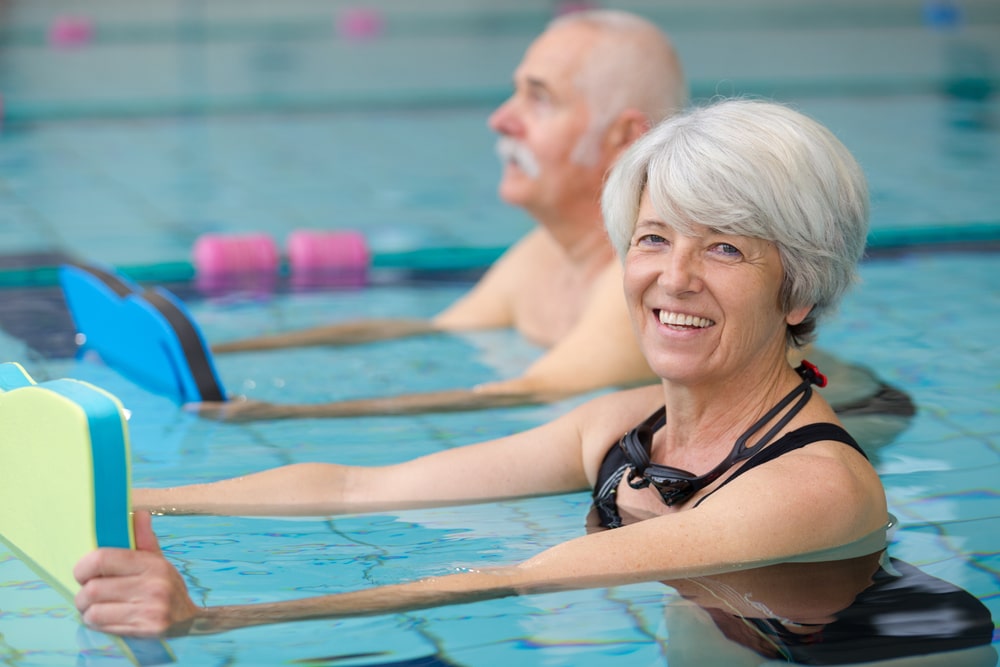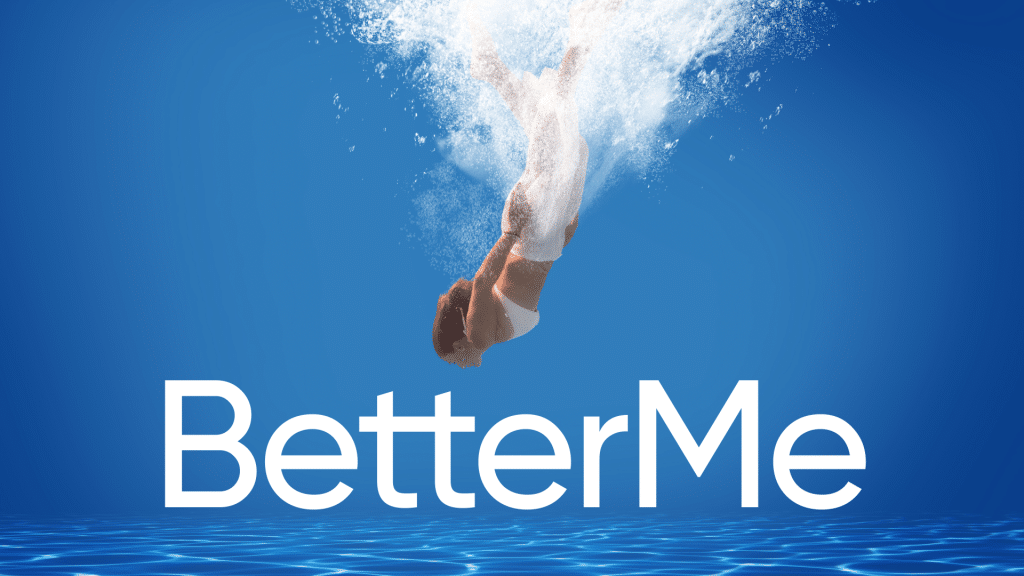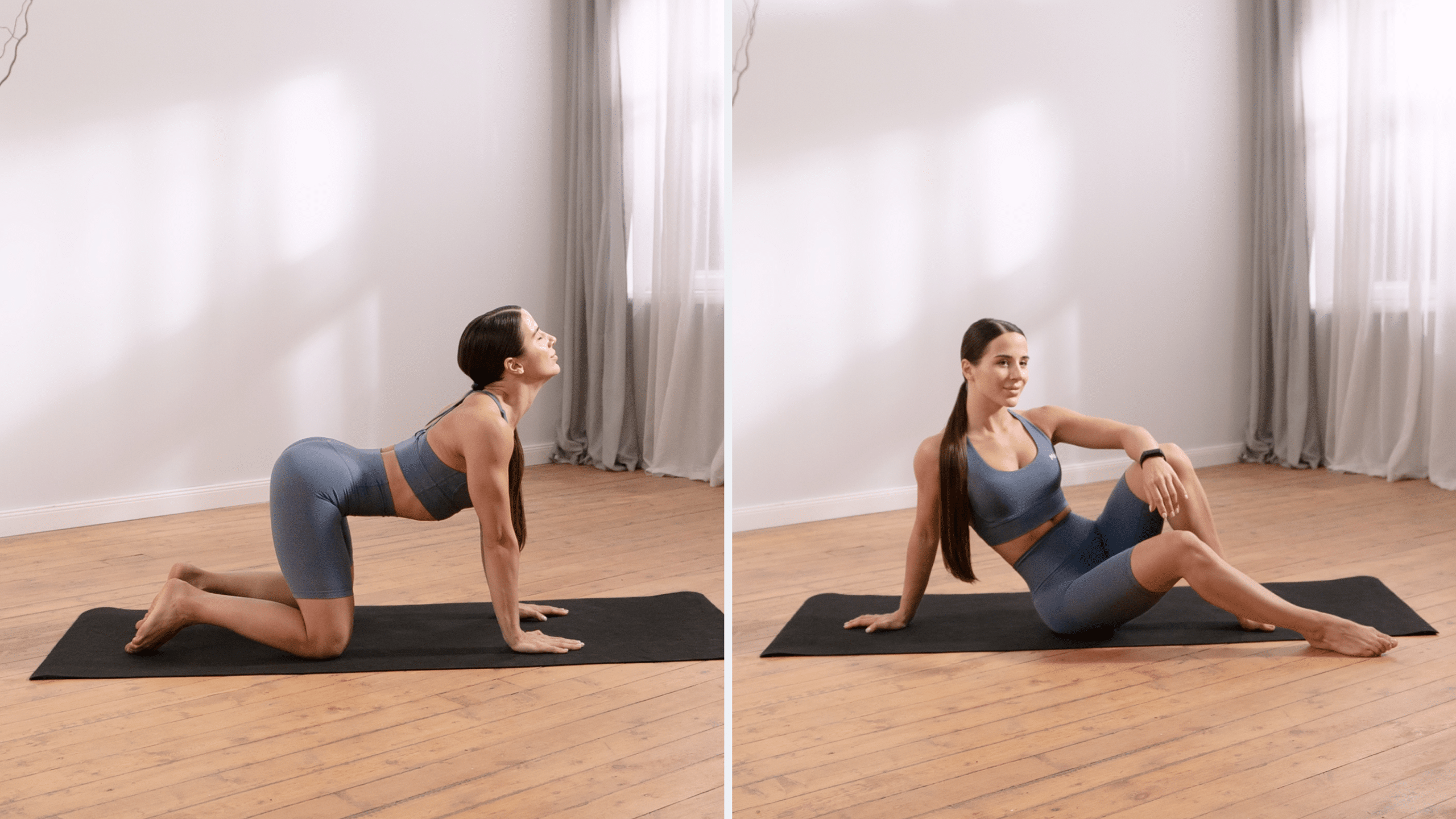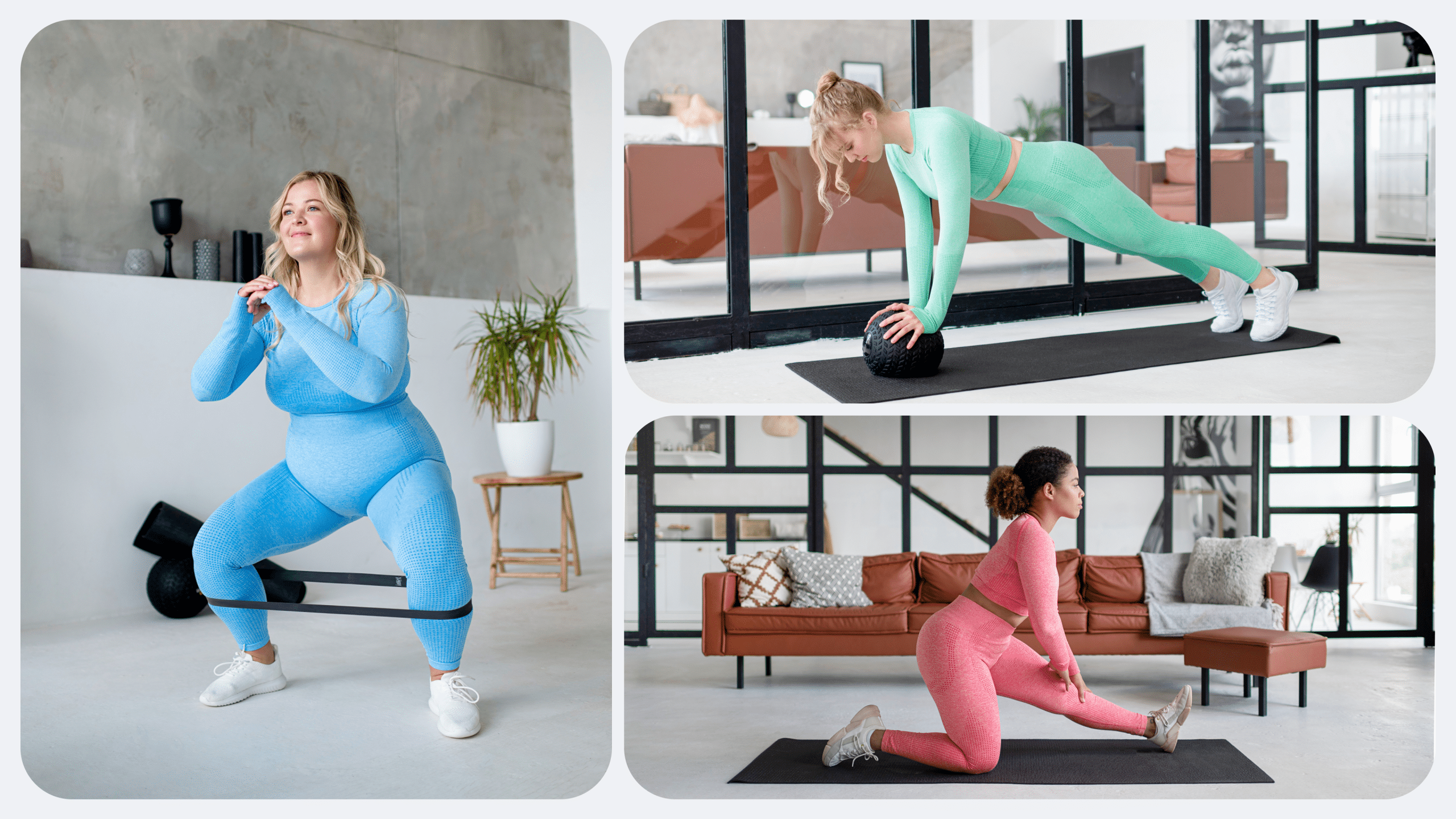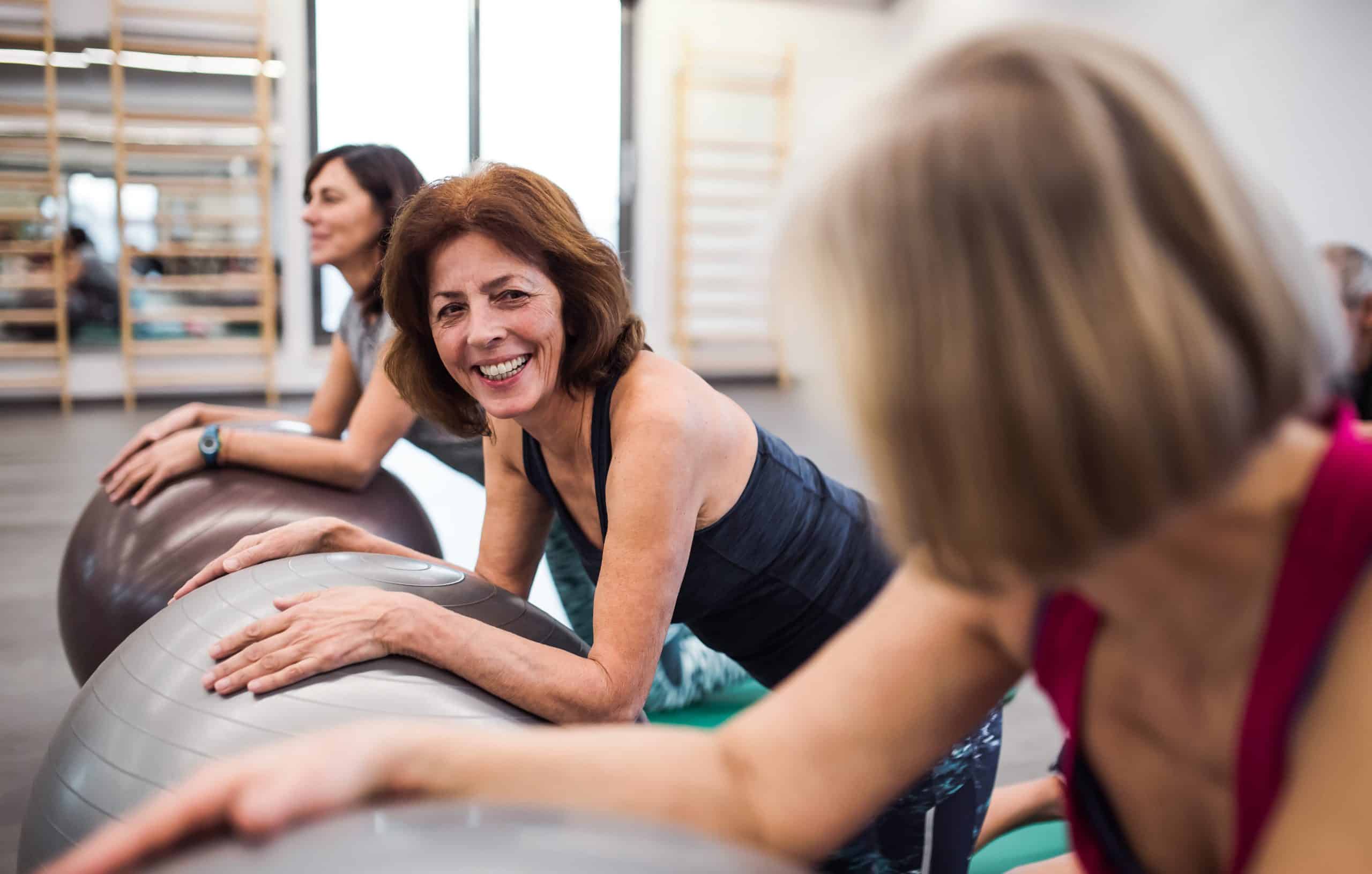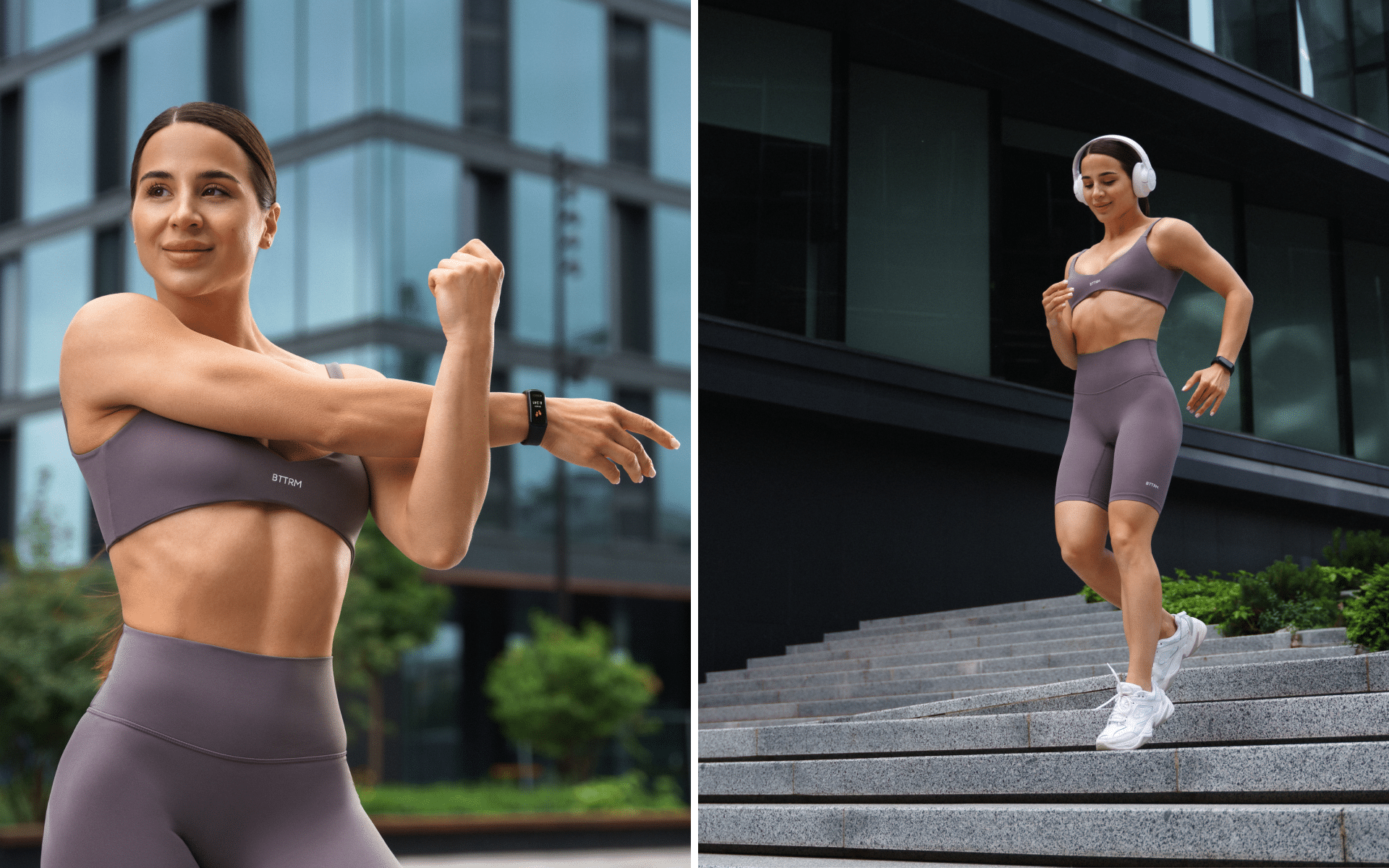Exercise is suitable for all individuals, regardless of their age. However, some exercise programs may not suit some individuals, especially seniors with a high risk of falling. Additionally, some programs may be challenging for their well-worn joints and bones and may even increase their risk of health conditions like arthritis and osteoporosis. That said, evidence has shown that water aerobics are safe and beneficial exercises for seniors, due to their long list of benefits. This article discusses water exercises for seniors, including their benefits, safety tips, and some of the best exercises.
Get your personalized
meal plan!
Water Aerobics For Seniors
Water aerobics are among the best exercises for seniors. Besides being fun, these exercises also work various muscle groups and help reduce the risk of several diseases. Some of the benefits of water aerobics for seniors include (3), (2), (6):
- Builds muscle mass and cardiovascular strength with gentle resistance from the water.
- Provides a whole body workout.
- Increases flexibility.
- It is a good workout for seniors with disabilities such as paraplegia.
- Helps with balance and reduces the risk of injury from falls.
- It May help with asthma by increasing lung capacity and improving breathing control.
- It may help relieve symptoms of multiple sclerosis as water may provide support and gentle resistance and ease pain.
- Improves heart and lung functioning.
- Relieves joint pain and symptoms of osteoporosis, arthritis, and blood circulatory problems.
- Reduces stress, anxiety, and depression.
- Provides a sense of well-being and accomplishment.
- Increases balance, coordination, endurance, and physical performance.
What To Know About Water Exercise For Seniors
Although these exercises are considered safe and beneficial for seniors, there are a few things that seniors must know. These safety tips can minimize injury risk and help you reap the most from these exercises. These safety tips include (3), (2), (1):
- Consultation. You must check with your doctor first before starting any new exercise program.
- Seeking Professional Help. Even if you are a pro swimmer you need to work with an instructor when performing these exercises. Be sure to also perform them in the presence of someone else, perhaps a lifeguard or a friend, when your instructor is not present.
- Limit. You need to set a schedule detailing when to work out and rest. No matter how fun these water aerobics exercises are, you need to perform them in moderation. Try performing a session of 30 minutes or so for five days. Be sure to get out of the water whenever you feel tired, dizzy, or nauseated.
- Form. It would be best if you learned the correct technique of each exercise before performing it. Take your time to practice and learn the proper form to minimize injury risk.
- Familiarity. You need to become familiar with the pool and your environment before performing any water exercises. So, learn the depth of the water, where the pool’s ladders and stairs are and differentiate the deep and shallow ends of the pool.
Read More: Swim Workouts For Beginners And Intermediate Level Swimmers
The Best Water Exercises For Seniors
Water aerobics are suitable exercises for individuals of all ages. Besides cooling you off in the hot sun, water also increases the intensity of the activities, making your muscles work extra. Below are some of the best water exercises for seniors:
Water Walking
If you enjoy brisk walking, you will be pleased to know that you can also do this exercise in water. This is an excellent exercise option for seniors because it is a safe, low-impact cardio exercise (2). This means it is safe for individuals with conditions such as osteoporosis and arthritis. However, you still need to consult your doctor before going ahead with the exercise.
Unlike your usual walking routine, water walking is more intense. The increased intensity is because water is at least 12 times more resistant than air (2).
It is worth noting that you can also perform this exercise with some equipment. For example, you can perform it with some strap-on wrist or ankle weights, a pair of dumbbells, hand webs or resistance gloves. Additionally, note that there are different variations of water walking exercises for seniors. Some of them include:
-
Regular Water Walking
This basic variation involves stepping forward to mimic the walking movement. It is very simple to do but very rewarding because the intensity of the water makes you work extra. If you are planning to do water walking, it would be best to proceed with the help of a trainer. Here are the steps to follow (2):
- Start in a standing position in the pool. Keep your back straight and shoulders back.
- Engage your core, look straight ahead and start walking with a long stride.
- Press into your heel first and swing your arms as you walk.
-
Sideways Water Walking
Another water walking variation to try is sideways water walking. Unlike the regular water walking movement that entails walking forward, this variation involves taking steps to your sides. It targets the inner and outer thighs (2). Additionally, walking sideways helps improve balance, flexibility, and spatial awareness. To do this exercise (2):
- Start in a standing position while in the swimming pool with your arms by your side.
- Step your right foot to the side with your right hip leading.
- Bring your left foot to meet the right one.
- Do this until you get to the end of the pool.
- This time, walk back to the starting position by leading with your left foot. Note that you can clasp your hands in front of your chest. If not, you can rest them on your hips during the movement.
Water Jogging/Running
One of the best ways to increase the intensity of water walking exercises is to advance to jogging or running. Water jogging or running is one of the pool noodle exercises seniors can do to burn more calories from the increased intensity (2). So, here are the steps to follow:
- Stand in the water upright and start jogging as you do on land.
- Move the right hand forward as you lift the left leg and move the left arm forward when lifting the right leg.
- Be sure to lean forward slightly.
Note that if you are in deep water, you may be required to wear a floatation device, such as a noodle. Additionally, you may be required to move your legs as if you are cycling. Make sure you breathe deeply and jog or run for 3 to 5 minutes.
Whether you’re a workout beast or just a beginner making your first foray into the world of fitness and dieting – BetterMe has a lot to offer to both newbies and experts! Install the app and experience the versatility first-hand!
Water Marching
Another water walking variation that you can perform to increase resistance is water marching. This mimics the movement of marching on land. Typically, the exercise makes your whole body move, and the water resistance makes your body muscles work extra harder (4).
As a result, your heart rate increases, and you get to burn calories. Please note, you must focus on maintaining a rhythmic march and steady pace for optimal results. To do this exercise:
- Stand straight in the part of the pool where the water reaches your hip level.
- Start to slowly march while keeping a straight back and a forward gaze.
- Keep your toes pointed, and move your arms with energy.
- March for at least two to three minutes.
Flutter Kicking
Flutter kicking is one of the kicking movements performed in water by both seniors and youngsters. It is not a new movement in water because these kicks are used when swimming, such as in freestyle and backstrokes. In addition, it is a primary skill in swimming the front crawl.
It is recommended for seniors because, besides being easy to perform, it also helps in muscle toning. It targets your lower rectus abdominal muscles and the hip flexors (4).
-
How To Flutter Kick In Water
Below are the steps to take to do the flutter kicking exercise:
- Hold onto the wall or edge of the pool and stretch your body in the water to be horizontal. It may involve submerging your face in the water so that your body stays horizontal. However, that may make it hard to breathe, so just try to keep your body as flat as possible.
- Bend your right knee, then push the right leg down in the water and slowly push the water down on top of your foot. Bend just a little, as bending too much will make you drag. Kick to stretch the right leg while in the water and repeat for your left leg.
- After doing this a couple of times, pick up the pace to start kicking at a quicker pace. If you find your legs sinking in the water, push your chest further down into the water. Remember to breathe normally and deeply.
- If comfortable, try the flutter kicks when holding onto a kickboard. Just push yourself away from the wall using your legs and position your body horizontally.
Read More: Planning To Visit An Exercise Swimming Pool? Here Are 8 Moves You Should Try
Side Leg Lifts
Another effective water exercise for seniors is the side leg lift exercise. This targets the gluteus maximus, which is crucial for hip stabilization. This exercise increases your balance, stamina, endurance, and coordination by strengthening the hip muscles (2). Below are the steps on how to do side leg lifts in the water correctly (2):
- Start in a standing stance in water with your hands out in front of you or resting on top of your hips. Keep your back straight and your toes facing forward.
- Slowly lift your right leg to the side with your foot flexed. Breathe in and shift your body weight to your left foot.
- Hold for a few seconds at the top, then exhale and bring the leg back to meet the left one.
- Repeat ten to twelve times on that leg, then switch to the other leg.
Arm Lifts
Arm lifts are some of the best water aerobics exercises for tightening arms. However, you can add different arm lifts variations to your workout plan, with or without water dumbbells or other flotation devices to increase resistance. Arms lifts are safe arm strengthening water exercises for seniors. Here is an overview on how to do them (4):
- Stand with your neck-deep in water to increase resistance to your entire arm and shoulder area.
- Stretch your arms by your sides, then raise them by your sides until they are aligned with your shoulders, then lower them.
- Add arm circles at the top of the movement if you need to increase the intensity. If not, you can open and close the arms at the top of the lift.
- Repeat.
Arm Curls
The arm curls are the other arm strengthening water exercise to consider in a water aerobics workout plan for seniors. Water arm curls are excellent in building and maintaining upper body strength. You can use a pair of water weights for increased resistance in this exercise. To do these curls (4):
- Stand in the middle of the pool when holding a pair of comfortable weights directly out in front of you. Have your palms facing out. You can also perform these curls with the palms facing toward you like when you do bicep curls.
- Curl the weights up and then back down in a slow and controlled movement.
- Repeat until you complete 8 to 10 reps.
Want to build an attention-grabbing bubble butt, blast away fat that’s stored in all the wrong places, spring-clean your diet, turn back the clock on your skin, skyrocket your self-confidence and shatter your insecurities? Check out the BetterMe app and set this plan in motion!
Leg Swings
Leg swings are excellent water exercises for strengthening your upper leg muscles. They also increase the strength and flexibility of your hips (3). Here is a step by step guide on how to do these leg swings:
- Stand upright on one side of the pool. Make sure the water is deep enough to reach your lower back.
- Hold on to the pool’s edge, then start swinging the outside leg forward. Keep the other leg straight, then hold the move for at least five seconds.
- Swing the outside leg backward, and hold the move for five seconds.
- Repeat in both directions at least 10 to 12 times.
- Repeat on the other side.
Calf Raises
The calf raise, also known as the standing calf raise, targets your calves, promoting lower body strength (3). Although this exercise does not require any equipment, you can increase the intensity by holding onto a kettlebell or a pair of dumbbells. To do this exercise:
- Start in a standing position with water at least waist level. Make sure you are also standing near the pool’s edge with your feet hip-width apart.
- Shift your weight forward to the balls of your feet, then lift your body by pushing into the fronts of your feet.
- Lift your heels to stand on your toes. Your calf muscles will be activated as you stand on your tiptoes. Squeeze your calves and press your head toward the ceiling.
- Hold at the top of the movement for a few seconds, then lower your heels.
- Repeat at least 10 times.
Chest Fly
The chest fly exercise is a staple in most gym workout plans. As the name suggests, it mainly targets your chest area. However, you can perform this classic gym exercise in a pool and still work on your chest (4).
The good thing is that water helps minimize its impact on your joints. This means you have a lower risk of joint pain or injury. Of importance to note is that you can perform this exercise with or without water weights. However, water weights are essential to build or maintain strength. For example, to perform the chest fly exercise:
- Start in a standing stance in water that is about your chest level.
- Stretch your arms in front of you to your chest height. Make sure the palms face each other but sit just below the water surface.
- Push your arms out to the side, then push them back to the center. Do this in a slow and controlled movement, and hold the move when you stretch your arms to the side.
- Repeat at least 10 times.
Is Aqua Aerobics Good For Weight Loss?
Water aerobics, also known as aqua aerobics, are among the practical exercises for weight loss. So, yes, aqua aerobics can aid weight loss. These exercises provide excellent cardiovascular activity that increases your heart rate and metabolism (4). As a result, you burn more calories.
Remember that the weight loss principle is to burn more calories than you consume. When you burn calories, you create and maintain a calorie deficit for weight loss. Again, remember that you burn more calories due to the increased water resistance, making you work twice as hard, further enhancing your weight-loss efforts.
How Often Should Seniors Do Water Aerobics?
Fitness gurus suggest following the exercise guidelines set by the Department of Health and Human Services. For example, they state that a healthy adult must get at least 150 minutes of moderate activity or 75 minutes of vigorous exercise in a week (5).
However, the exercise guidelines also acknowledge that you spread these exercises over the week. This is because your body muscles need ample time to grow and recover. Therefore, water aerobics are classified as moderate activities.
It would help if you aimed at getting 150 minutes of water aerobics in a week. If you break down this further, this would mean performing a 30 minute pool workout five times a week. So for the best results, it would be best to perform such a routine for thirty minutes in each session, five times a week.
The Bottom Line
Thanks to their long list of benefits, water aerobics are among the best exercises for seniors. Evidence shows that water increases the resistance, so your body muscles have to work more to do these water exercises.
As a result of this, you benefit from increased muscle strength, balance, coordination, endurance, and reduced disease risk. Some of the best water exercises for seniors include water walking, jogging, marching, or running, arm lifts and curls, and side leg raises. Chest fly and flutter kicks are also excellent considerations.
That said, we urge you to talk to your doctor and trainer before trying these exercises or changing your workout plan. Additionally, remember to do these exercises five days a week and rest on the other days.
DISCLAIMER:
This article is intended for general informational purposes only and does not serve to address individual circumstances. It is not a substitute for professional advice or help and should not be relied on for making any kind of decision-making. Any action taken as a direct or indirect result of the information in this article is entirely at your own risk and is your sole responsibility.
BetterMe, its content staff, and its medical advisors accept no responsibility for inaccuracies, errors, misstatements, inconsistencies, or omissions and specifically disclaim any liability, loss or risk, personal, professional or otherwise, which may be incurred as a consequence, directly or indirectly, of the use and/or application of any content.
You should always seek the advice of your physician or other qualified health provider with any questions you may have regarding a medical condition or your specific situation. Never disregard professional medical advice or delay seeking it because of BetterMe content. If you suspect or think you may have a medical emergency, call your doctor.
SOURCES:
- A Guide To The Best Exercises For Seniors (2021, forbes.com)
- A ‘water walkers’ exercise program for the elderly (1992, ncbi.nlm.nih.gov)
- Effects of Aqua Aerobic Therapy Exercise for Older Adults on Muscular Strength, Agility and Balance to Prevent Falling during Gait (2013, ncbi.nlm.nih.gov)
- Fit in my 40s: aqua aerobics is back – underestimate it at your peril (2021, theguardian.com)
- How much should the average adult exercise every day? (2021, mayoclinic.org)
- Physical and mental benefits of swimming (2021, medicalnewtoday.com)
